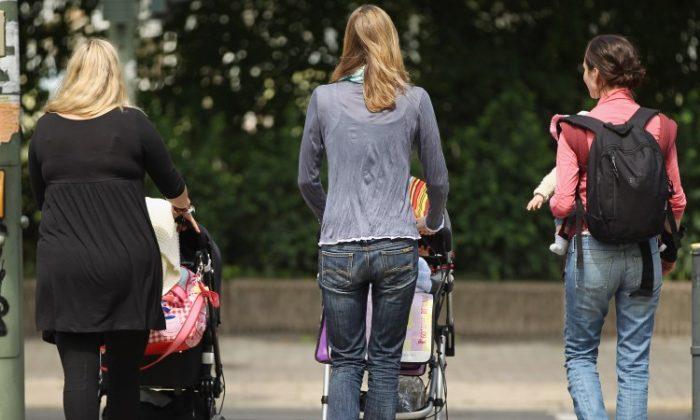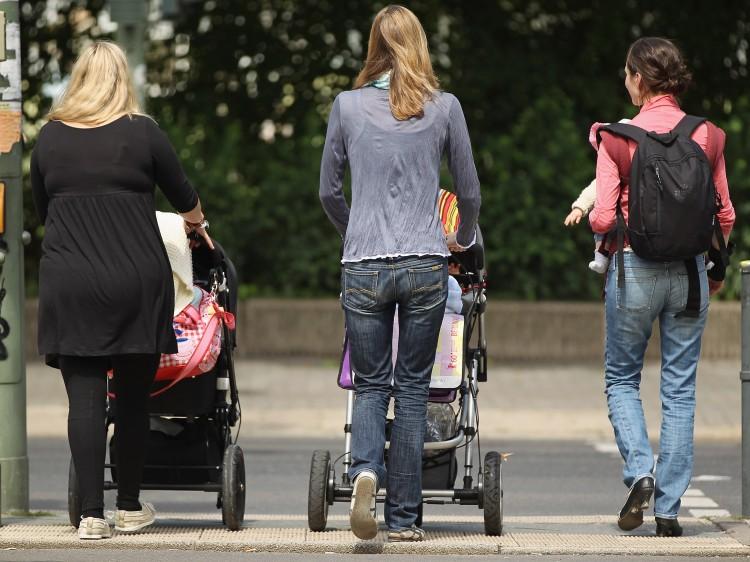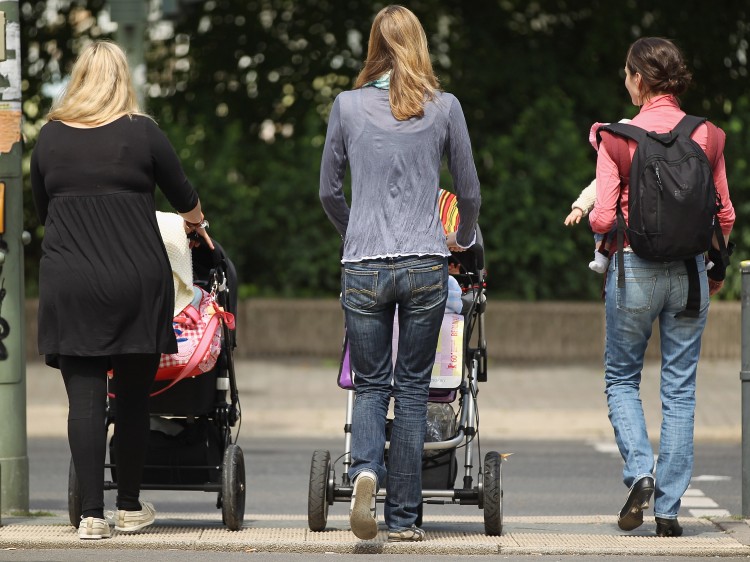Many parents are now forgoing bulky prams to transport their precious cargo with the help of modern-designed baby slings. Once thought of as something only women in developing countries used, slings are now gaining popularity in affluent Western countries too.
Baby slings have been used by women around the world for thousands of years. Australian indigenous women wore their babies on their backs in a pouch fashioned from soft bark.
Allowing the mother’s arms to be free enabled her to fulfill her daily activities. It also served to keep baby in a safe place, high off the ground, away from predators or biting insects.
But most importantly, it gave the developing baby more time to be “in arms,” which is paramount to ensuring a close bond with the primary caregiver. Being so close, the caregiver can understand the baby’s nonverbal cues, gestures, and cries, allowing her to better meet the needs of her baby.
Infants thrive both physically and cognitively from loving physical contact. This is what hunter-gatherer societies probably always knew and what recent research continues to confirm.
Unfortunately, over the past century, against our better judgment, many adopted the notion that too much affection would spoil the child.
Soothing Environment
Several studies on baby-care practices in the United States concluded that babies carried in a sling for three hours a day cry 40 percent less than babies who are not often carried.
This is because the baby is in “the most soothing of all environments,” according to renowned American doctor William Sears, who promotes and educates parents on attachment-style parenting.
“Mother’s walking motion ’reminds’ baby of the rhythm he enjoyed while in the womb. The sling encircles and contains the infant, who would otherwise waste energy flinging his arms and legs around, randomly attempting to settle itself.
“The worn baby is only a breath away from his parent’s voice, the familiar sound he has grown to associate with feeling good,” Dr. Sears says.
Using a sling is a convenient way to give baby plenty of in-arms time, even with a busy lifestyle.
There are also many other benefits, including reducing colic and reflux, as the baby is held in an upright position with gentle pressure on its tummy. Being in the correct “frog position” is good for the baby’s hip joints, as they are flexed and adducted.
Carrying pre-term babies in a sling, heart-to-heart and skin-to-skin, is known as “kangaroo care.” A therapy used by nurses and midwives, it is recognized that being in this supportive and close environment can gently help a new or weak baby adjust to the outside world and encourage breastfeeding.
Variety of Designs
A vast array of modern slings on the market means that people have a lot to choose from when looking for a sling to suit their needs and budget.
The classic style of carrier can snugly hold a very young newborn on the chest. Some slings are more versatile and allow the baby or small child to be carried on the back, front, or on the hip, as well as having the option to breastfeed.
Cloth slings are a long piece of material that cradles the baby across one’s chest, as if in a hammock. When the baby gets stronger, it can sit up in the sling and enjoy social interactions.
It is important to try several different slings in order to choose the one that is the most comfortable for you.
Be sure to observe product safety recommendations and correct positioning. Babies in slings should always be worn over the top of the parent’s clothing, such as jackets and heavy garments, to avoid overheating.
The Epoch Times publishes in 35 countries and in 19 languages. Subscribe to our e-newsletter.








Friends Read Free